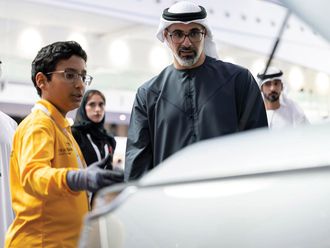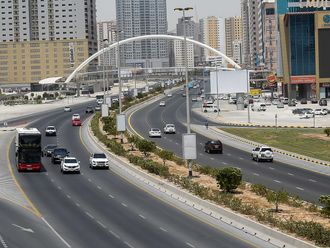Abu Dhabi: Extensive Emiratisation efforts have ensured that 39 per cent of the teaching staff at Abu Dhabi emirate’s public schools is currently Emirati. But, in order to meet 2018 targets, nearly 1,000 new Emirati teachers must be hired each year, a senior education official said in the capital today (March 23).
A number of hurdles need to be bridged, however, including the perception that teaching is an especially demanding job, said Salama Al Ameemi, executive director for organisational development and excellence at the emirate’s education sector regulator, the Abu Dhabi Education Council (Adec).
“Our target is to Emiratise 50 per cent of the teaching staff by 2018, which we believe will allow us to ensure sustainability in the demand for teachers. But while there is a lot of demand for them, the supply of Emirati teachers is unnaturally low,” she told Gulf News.
To counter this, the authority has already undertaken a number of steps, based on concerns raised by teachers over the years. For one, teachers’ pay, which had remained unchanged for nearly 30 years, was raised by up to 35 per cent in 2013.
“Following this increase, an entry-level Emirati teacher earns at least Dh28,000 per month, which is more than entry-level pay for other Emirati civil servants. We also started offering numerous professional development opportunities that help teachers update their skills and grow in their careers,” Salama explained.
The official was speaking on the sidelines of a press conference at which the details of another training programme, Eedad, were announced. Under this particular initiative, Emirati jobseekers specialising in education are given a chance to hone their teaching skills so that they can secure public school teaching positions.
In the first year of its implementation during the 2014-2015 academic year, 35 trainees were hired after they completed the training programme.
“This year, we have enlisted 55 candidates, including two men, who will undergo four months of training at the Emirates College for Advanced Education. They will also receive stipends during this period,” Salama said.
The training will involve six weeks of theoretical learning, five weeks of on-the-job work and five more weeks of learning to cover any gaps.
“These trainees meet most of our requirements to take up teaching roles. However, they would fare better with a little intervention, such as reskilling to fill a particular subject area where we need more teachers, or enhancement of their English language and classroom management skills,” the Adec official added.
At present, teachers are needed to take up vacancies in Cycle 2 (Grade 6 to 9) and Cycle 3 (Grade 10 to 12) schools.












